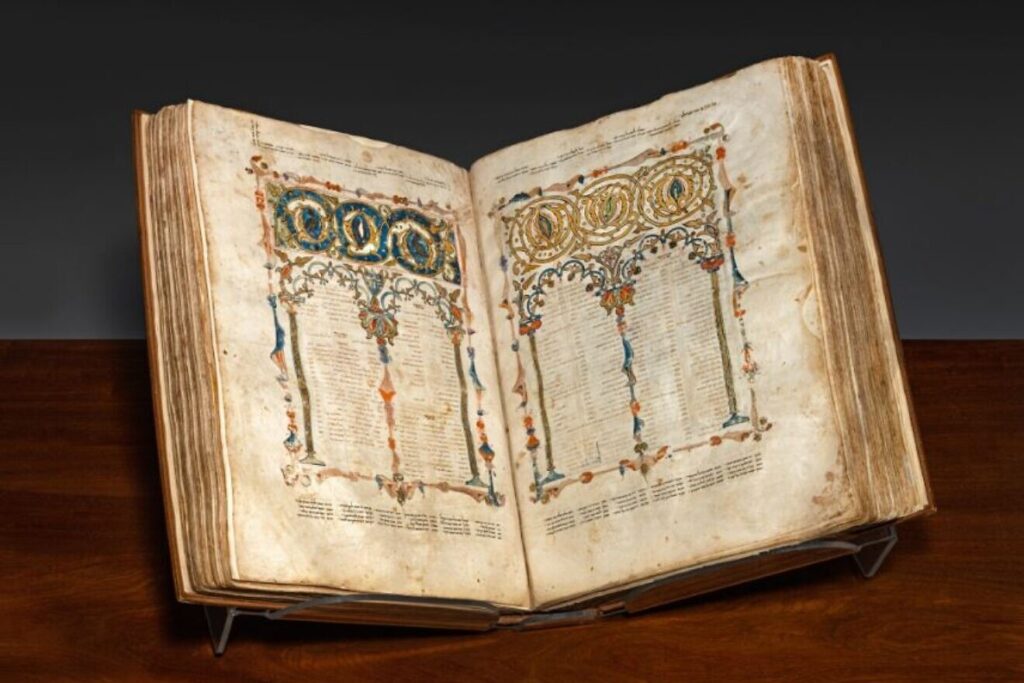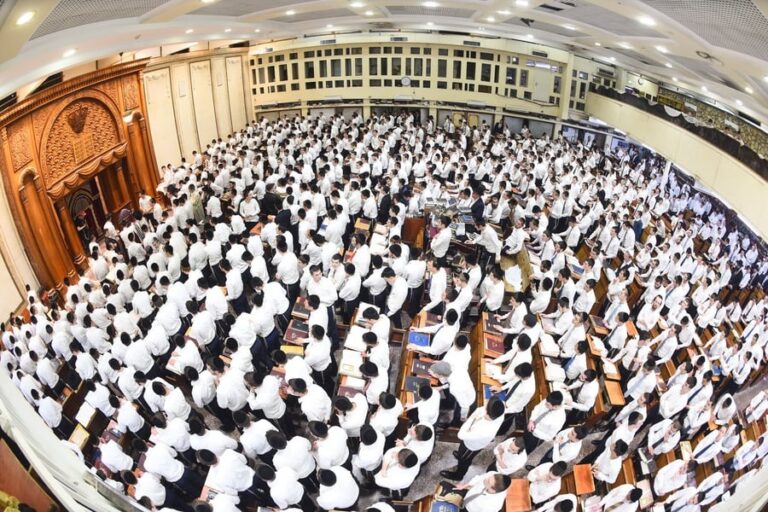A rare and exquisitely illustrated Chumash from the 14th century will soon be showcased to the public, following its recent sale at Sotheby’s New York for an impressive $6.7 million. The Shem Tov Chumash was sold on September 10 at the high end of its estimated value of $5 to $7 million.
Described as “a tour de force of biblical and kabbalistic scholarship and a precious witness to the medieval tradition of Sephardic book art,” the Shem Tov Chumash was completed in 1312 by Rabbi Shem Tov Ibn Gaon in the northern Spanish city of Soria. Its intricate artistry and historical significance make it one of the most important Hebrew manuscripts of the medieval period.
Sharon Liberman Mintz, Sotheby’s international senior Judaica specialist for books and manuscripts, highlighted the Chumash’s unique blend of scholarship, mysticism, and art. “The architectural features mirror the mudéjar art of the time, while at the same time using artistic vocabulary from French gothic,” she explained. The Chumash also incorporates various streams of Jewish thought, including references to the Hilleli codex—a legendary, lost Chumash—and contains around 2,000 Kabbalistic letters imbued with secret meanings.
The Shem Tov Chumash’s historical journey is equally remarkable. “I think the journey is so exciting because it’s out of Spain by 1315, so it escapes the riots and massacres of 1391 and then the expulsion [of the Jews] from Spain in 1492, when many books were lost,” said Liberman Mintz. “Then it gets to Israel, which is overrun by the crusaders … [and] it manages to escape that. It goes to Baghdad, and we know that the Jewish community of Baghdad witnessed all kinds of upheavals. It somehow makes its way to Tripoli. It’s in London during the Second World War—or probably in Letchworth—and it survives the war. It’s had a miraculous journey of survival.”
The Chumash’s mystical reputation adds another layer to its allure. In the late 19th century, it was used as a kameiah for women in difficult labor and was said to alleviate their pains upon entering their home. It was later acquired by David Solomon Sassoon, a renowned collector, in the early 20th century. The Chumash held a central place in his collection, and as he neared death in 1942, Sassoon famously instructed his son to speak to the Shem Tov Chumash and his Sifrei Torah, telling them, “We will return to you, and you will return to us; we will not forget you, neither in this world nor in the World to Come.”
(YWN World Headquarters – NYC)











